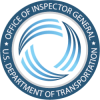What We Looked AtThe Federal Aviation Administration (FAA) has historically maintained an excellent safety record. However, two fatal accidents in 2018 and 2019 involving the Boeing 737 MAX 8 raised concerns about FAA's oversight and certification of civilian aircraft manufactured and operated in the United States. At the request of Secretary of Transportation Elaine L. Chao and several members of Congress, our office has undertaken a series of reviews related to FAA's certification of the MAX and its safety oversight. This is the third report in that series. It focuses on FAA's risk assessments following the accidents, as well as the recertification and return to service efforts for the MAX. Accordingly, our audit objective was to evaluate FAA's processes and procedures for grounding aircraft and implementing corrective actions, including for the MAX 8. Specifically, we evaluated FAA's risk assessment processes following the accidents, and the Agency's process for returning the airplane to service.What We FoundFAA's steps following the accidents were in line with its overall post-event risk assessment processes; however, we identified some areas that may impact the Agency's response in the future. First, FAA's processes, by design, allow for significant flexibility in order to factor in the judgment of engineers. Second, FAA has not updated the underlying order and related guidance for its post-event risk assessment processes in over a decade. Third, the Agency lacks quantifiable human factors data, such as pilot reactions to non-normal situations. Finally, FAA's engineers are not all following or receiving the same guidance or training. As a result, FAA may not be able to ensure it consistently follows the most effective risk assessment processes following a safety event.FAA completed the recertification of the 737 MAX on November 18, 2020. During the recertification process, the Agency retained regulatory compliance findings for the design changes instead of delegating them to Boeing's Organization Designation Authorization (ODA) program. Numerous complex issues from multiple safety reviews prompted FAA to require Boeing to submit a document demonstrating the effects of Boeing's proposed changes on the speed trim system and how those changes affected the safe operation of the MAX. While FAA is incorporating many of the lessons learned from the MAX recertification efforts for future projects, there are still improvements and procedures currently being codified by the Agency.Our RecommendationsWe made seven recommendations to improve FAA's processes for risk assessment and determination of corrective actions. FAA concurred with all our recommendations and provided appropriate actions and planned completion dates.
Open Recommendations
| Recommendation Number | Significant Recommendation | Recommended Questioned Costs | Recommended Funds for Better Use | Additional Details | |
|---|---|---|---|---|---|
| 2 | Yes | $0 | $0 | ||
| Revise the Transport Airplane Risk Assessment Methodology (TARAM) handbook to incorporate current safety data, including available international data when appropriate. | |||||
| 3 | Yes | $0 | $0 | ||
| Review the TARAM handbook's quantitative safety guidelines to determine if they still meet the Agency's needs, and implement identified corrections as appropriate. | |||||
| 5 | Yes | $0 | $0 | ||
| Review the TARAM and Transport Airplane Safety Manual (TASM), address any identified key differences the two documents, and integrate TASM into TARAM when appropriate. | |||||
| 7 | Yes | $0 | $0 | ||
| Identify lessons learned related to the application of the 737 MAX recertification and the Continued Operational Safety process that have not yet been addressed and include them into airplane certification and safety evaluation processes. | |||||


